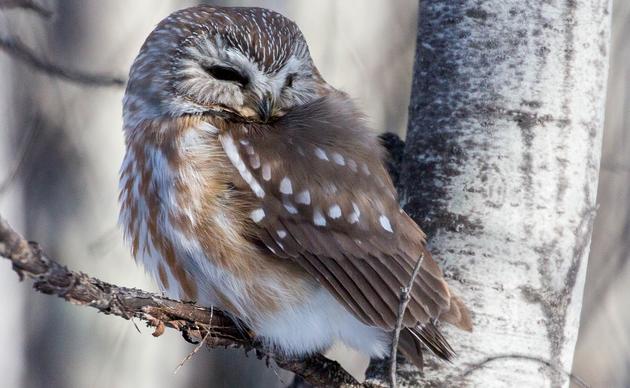News
Beach Nesting Birds
Beach-nesting Birds of New York and New Jersey
Each year, from April through August, these birds travel to the beaches along the coast of New York and New Jersey to nest and raise their young. Some of them, such as terns, nest in colonies, while others, such as the plovers, nest alone. The birds lay their eggs in shallow scrapes in the sand, sometimes lined with bits of shell and debris, placed above the high tide line in open in sandy areas with little to no vegetation. Beach-nesting birds are uniquely adapted to suit their habitat. The eggs and chicks are perfectly camouflaged to match their sandy environment. Downy chicks that look like tiny fluff balls leave their nests soon after hatching, but hang out on the beach for several weeks with their parents until they are old enough to fly and fend for themselves. During this time, their parents teach them vital skills they will need to survive on their own. They can be hard to see! Have you ever seen eggs or a young plover on the beach? They are really tricky to pick out from the sand and shells. Populations of beach-nesting birds are declining and they need your help Several species of beach-nesting birds have shown alarming population declines in recent years. Common terns, as their name implies, were once very abundant, but their numbers have declined nearly 80% since coast-wide waterbird surveys began in the late 1970s. Nesting on the beach is a challenge under the best of circumstances. Weather can be harsh and storms or extreme tides can harm nests. When coastal development and beach stabilization are added in, it becomes very difficult for the birds to nest successfully. Beach-nesting birds are extremely sensitive to human disturbance. Eggs and chicks are camouflaged to resemble the sand and can easily be stepped on or run over and crushed. The birds see humans and their pets as predators; when a human or dog wanders too close to nesting sites, the adult birds will leave the nest, exposing the eggs or chicks to extreme temperatures and predation by gulls and crows. As the coastal areas the birds rely on become more heavily populated, not only do human disturbances increase, but the amount of garbage also increases significantly. This garbage attracts animals such as gulls, foxes and raccoons that will readily prey on beach-nesting birds and their young. People often unintentionally disturb beach-nesting birds because they are simply unaware that birds nest on wide, open and bare expanses of sand. They might not realize that walking through the nesting area can harm the eggs or chicks. In addition, in some places there are conflicts between people and beach nesting birds where people feel the beach-nesting birds prevent them from using the beach in the way that they want to. This kind of resentment can result in people not being particularly careful around nesting birds, sometimes with devastating results. If the nest becomes exposed to the elements, it can only takes minutes for chicks or eggs to die in the heat of the summer sun. Nesting sites are often marked with signs stating the presence of nesting terns, plovers, or colonial waterbirds. Biologists put string fencing around breeding habitat in order to direct vehicle and foot traffic around nesting areas. Staff from a number of different agencies is responsible for patrolling these nesting sites to ensure their safety and success. With a little help, beach-nesting birds can survive and coexist with people! Here’s how you can help these birds have a successful nesting season. If you’re at the beach between April and September, be on the lookout for the following behaviors, which can indicate that birds are nesting nearby:- Adult birds standing or sitting on the beach or near dunes
- Adults engaged in courtship, broken wing, or injury displays
- Adult birds dive-bombing people or pets
- Adult terns or skimmers carrying fish
- Nests or nest scrapes
- Eggs or chicks
- Stay out of areas that have been roped off for nesting birds. Some nesting and feeding sites are posted during the breeding season.
- Learn to recognize potential nesting habitat. Be aware that not all nesting sites are posted. Since birds can nest on the upper portion of inlets and remote/undeveloped beaches, avoiding these areas during the nesting season will allow birds to tend to their eggs and chicks without disturbance. You will know you are too close to a nest or chick if terns begin to dive bomb you in defense of their nests or if birds call loudly or feign a broken wing nearby. Walk below the high tide line and quickly leave the area.
- Keep your dog on a leash. Dogs may chase and harass young and adult birds and can destroy nests and kill chicks if not kept on a leash. Even if they don’t chase birds, their presence disturbs them.
- Avoid flying kites, throwing balls, and exploding fireworks near nesting and feeding areas. These activities can cause birds to leave their nest or chicks unprotected.
- Do not feed gulls on the beach. This seemingly harmless activity can attract gulls to nesting areas where they prey on the eggs and chicks of beach-nesting birds.
- Take your trash with you when you leave the beach. Garbage, including bait and scraps from cleaned fish, attracts predators to nesting areas. Fishing line that is left on the beach can entangle and kills birds.
- Teach others to appreciate beach-nesting birds. They are a vital part of the ecosystem and a sign of a wild and healthy beach
How you can help, right now
Donate to Audubon
Help secure the future for birds at risk from climate change, habitat loss and other threats. Your support will power our science, education, advocacy and on-the-ground conservation efforts.










